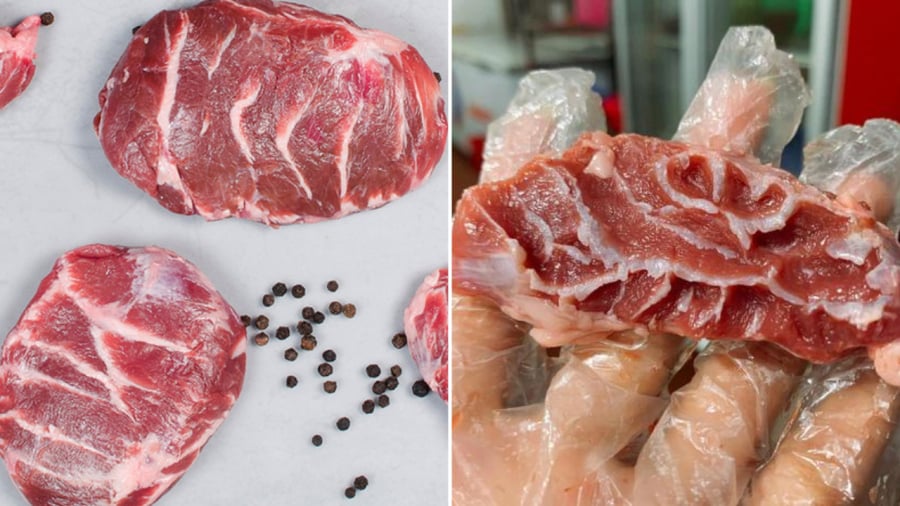Pork cheek, or “má đào” in Vietnamese, is a delicacy not commonly found in markets. It is a small, tender cut of meat from the pig’s cheek, consisting of soft connective tissue, fat, and lean meat. The outer cheek meat tends to have more fat, while the inner má đào has a delicate mix of soft tendons, fat, and meat.
This cut of meat is highly versatile and nutritious. It is a good source of vitamin B, vitamin D, and essential minerals that boost immunity and support bone health. The collagen in the meat also promotes healthy, glowing skin.
Due to its limited availability, those seeking má đào often need to visit the market early or specially request it from their butcher. When purchasing, it is important to inspect the meat for freshness, choosing pieces that are moist but not wet or slimy. A dry piece of meat that quickly springs back when pressed indicates freshness.
The ideal color is a bright pinkish-red, avoiding any dark or discolored sections. Fresh meat should also be odorless, and it is recommended to blanch the meat with boiling water, ginger, and scallions to eliminate any unwanted smells.

Cooking Methods
Pork cheeks can be prepared in a variety of ways. Simple boiling is an option, but to enhance the flavor, consider blanching the meat first with ginger and scallions to remove any unpleasant odors. Braising, stewing, and grilling are also excellent choices for this cut of meat.
For grilling, a simple marinade of salt, pepper, garlic, and honey is all you need to bring out the best in the meat. Alternatively, slice the cheeks thinly and stir-fry them with vegetables or pickled vegetables for a quick and tasty dish.
Unlike beef, which can be consumed rare, pork should always be cooked thoroughly to avoid the risk of bacterial or parasitic infections. When storing pork, keep it in the fridge for no more than three days, or in the freezer for up to three months, to maintain its quality and safety.
Other Delicious Pork Cuts
- Tenderloin (Thăn): Lean and versatile, it can be steamed, boiled, stir-fried, braised, grilled, or roasted.
- Front Shin (Bắp Chân Trước): Darker meat with a chewy texture, perfect for boiling, braising, or stewing.
- Shoulder (Vai): A mix of fat and lean meat, ideal for roasting, grilling, frying, or mincing for sausages and meatballs.
- Belly (Ba Chỉ): Marbled with fat and lean meat, it’s delicious boiled, roasted, braised, grilled, or steamed.
While pork cheek is a rare treat, these other cuts are more readily available and equally delicious, ensuring you can always enjoy the best that pork has to offer.






























